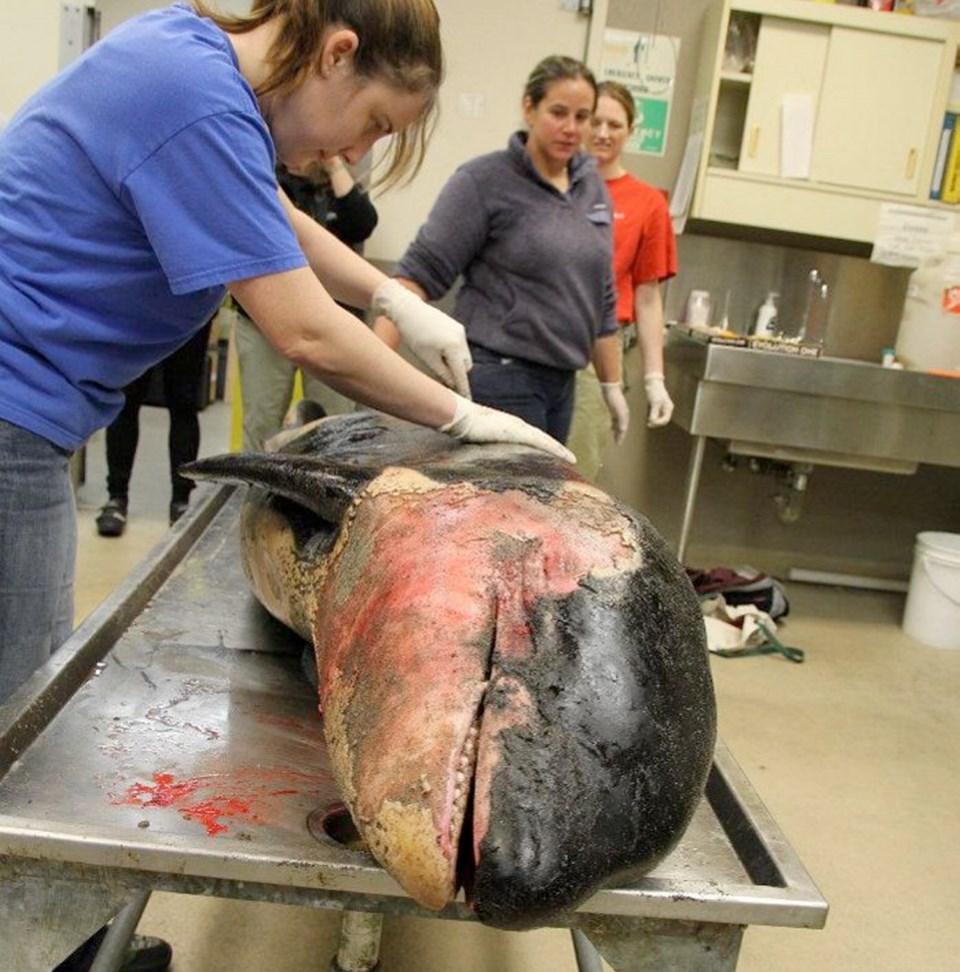Killer whale carcasses are seldom found, and the rare ones that wash up on Pacific shores are gold mines of critical information, says a new study by a team of Canadian and U.S. scientists.
The study, published in the journal Marine Mammal Science, emphasizes the need for scientists to study stranded killer whale cadavers.
“Only about 10 a year are found in the whole of the North Pacific,” said Joe Gaydos, SeaDoc Society director and one of the study’s authors.
That means that, even in highly researched groups such as the southern resident killer whales, only about three per cent of those that die are found onshore.
“They’re like hen’s teeth,” Gaydos said.
“They just end up sinking, and the ones that do come to the beach are often scavenged before anyone gets to them.”
That meant many lost opportunities to learn from the animals.
Before Gaydos and Stephen Raverty, a veterinary pathologist in B.C.’s Agriculture Ministry, came up with a standardized orca necropsy system in 2004, only about two per cent of stranded killer whale cadavers received a full examination.
Since the system was implemented, the share has increased to 33 per cent, the study found.
“Each stranded orca should be viewed as a unique opportunity to enhance our understanding of this magnificent species,” Raverty said.
“These are virtual gold mines for scientists to learn about these animals and then apply it to their conservation,” Gaydos said. “Now we are getting data on contaminants and diseases and seeing some trends.”
One of the noticeable trends is that more animals are being hit by boat propellers than previously believed, Gaydos said.
“That is something we can control,” he said.
Scientists have also found diseases they did not know affected killer whales, he said.
Necropsies have shown the whales absorb extremely high loads of man-made toxins and have provided information about how groups such as the fish-eating southern residents are relying on severely depleted salmon stocks.
Earlier studies showed that the resident killer whales prefer chinook to any other variety of salmon.
The study was completed with the collaboration of dozens of killer whale scientists, who provided stranding and whale population data from Washington, Oregon, California, Alaska, Hawaii, B.C., Mexico, Japan and Russia.
Increased funding for studying killer whale carcasses has come from Fisheries and Oceans Canada and the U.S. National Marine Fisheries Service.



